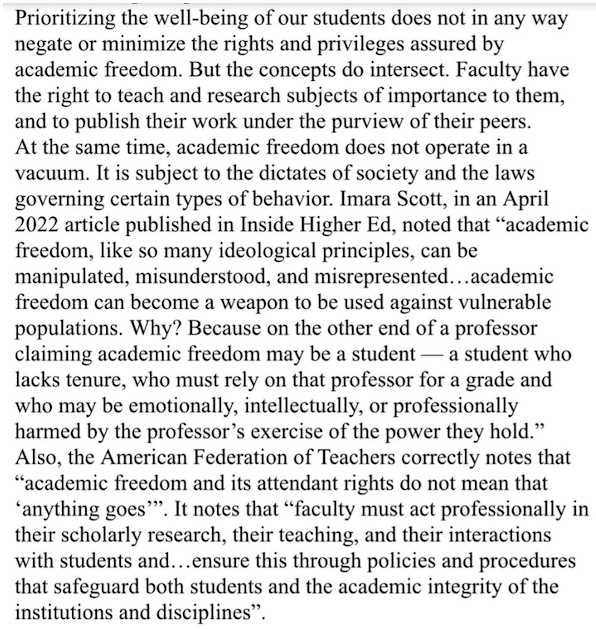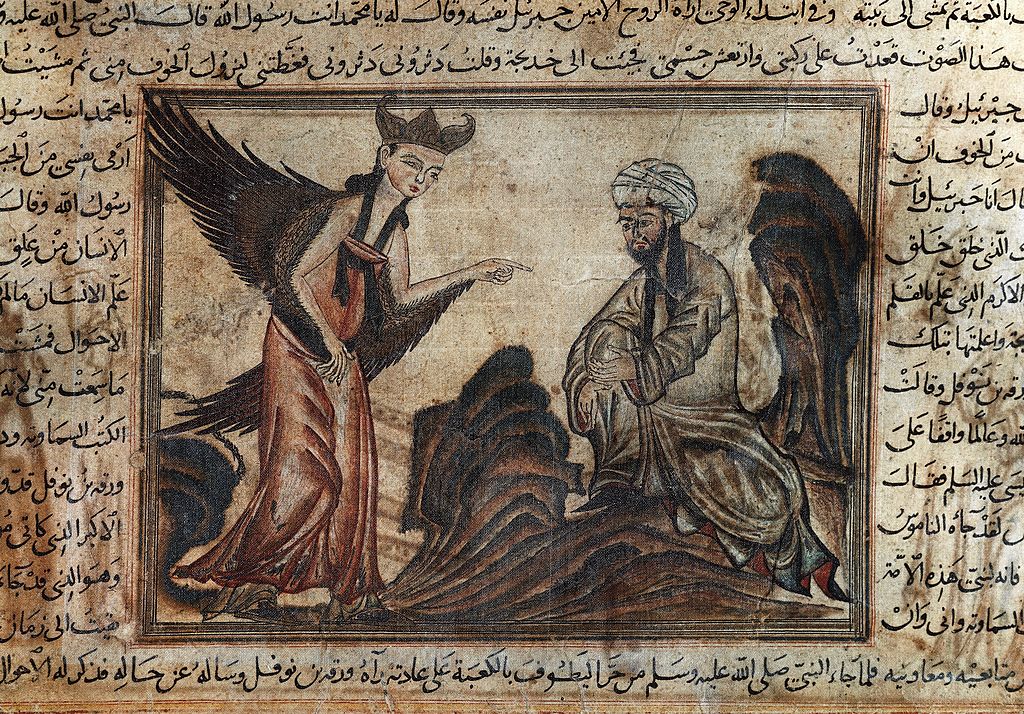Did you hear that the libs want to ban gas stoves?
It’s not universally true but it’s truer than you might think. And to the extent it isn’t universally true, give it time. Between the environmental hook and the fact that the two parties have already begun polarizing around the subject, progressive orthodoxy is destined to congeal around gas-stove-banning soon enough.
It’s the hottest culture war story going. But I’m not writing about it.
I try not to write about culture-war kerfuffles anymore, partly because I’m a poor polemicist but mostly because outlandish left-wing proposals increasingly fall into the “presented without comment” category in my mind. Banning gas stoves is such a cartoonish example of meddlesome green utopianism, and destined to be so wildly unpopular, that it’s practically self-refuting. It’s a campaign commercial for the Republican Party. What else could I say about it except offer a weary “These f—ing people”?
I feel similarly about the fracas at Hamline University in Minnesota over a professor showing a medieval image of Mohammed to a class studying art history. These f—ing people.
But I am going to write about that one, as it involves an old hobby horse of mine.
My former site, Hot Air, launched just six months after the Danish newspaper Jyllands-Posten published the so-called “Mohammed cartoons” in the fall of 2005. That was the thick of the war on terror, when right-wing blogs were consumed with the clash of civilizations between the Middle East and modern West. The controversy over the Mohammed cartoons was rich material for a conservative because it forged an unholy union between two of the right’s enemies. One was the fundamentalist Muslims threatening Jyllands-Posten for violating their taboo against depicting their prophet. The other was cowardly Western media outlets that refused to print the cartoons when reporting on the controversy, ostensibly out of “sensitivity” to Muslims but in reality because they feared being attacked by terrorists if they did so.
Which, in fairness, turned out to be a rational fear.
I wrote many—many—posts at Hot Air about liberal institutions smuggling illiberalism into the West in the guise of “sensitivity” because I had many occasions to do so. Reliably, for years, new uproars would bubble up over offending Muslim sensibilities and the risk calculus pertaining thereto. But those uproars don’t seem to happen as much anymore. Presumably it’s because the war on terror has receded from the public imagination. Possibly it’s because some of the people most willing to offend Muslim sensibilities are, well, dead.
The Hamline fiasco is noteworthy because it’s a throwback. But also because, in my years of writing about the tension between liberalism and “sensitivity,” it may be the starkest example I’ve seen that the two can’t be fully reconciled. No matter how sensitive you aspire to be while serving some liberal end, you’re forever one heckler away from being deemed not sensitive enough.
The lesson of the Hamline case was stated succinctly by a Muslim student. When deciding whether a given act is offensive, “Hamline teaches us it doesn’t matter the intent, the impact is what matters.”
And impact is measured subjectively, not objectively. If 100 people find no offense in an act but one pronounces himself harmed by it, a wrong has been committed. Provided that one is a member of a “vulnerable” group, at least.
The essential reporting on the Hamline incident comes from the New York Times, whose story I recommend reading in full. Erika Lopez Prater, an adjunct professor teaching a class on global art history, wanted to include Islamic art in her syllabus but recognized that Muslim students might take offense at depictions of Mohammed. So she warned them of what was to come—repeatedly. She warned them in the syllabus. She invited students to discuss the matter with her beforehand. (No one did). She warned them again in class a few minutes before she displayed the image.
The image wasn’t provocative either. It wasn’t a Jyllands-Posten cartoon designed to tweak Muslim sensibilities. It came from a 14th century Persian manuscript regarded as a treasure by scholars. It was reverent, and obviously germane to a course on global art. Ironically, if Prater hadn’t been so keen to “decolonize” her global art survey by making sure to include Islamic works, the entire controversy would have been avoided. By straining to make sure that Muslim culture was represented in class—an act of true sensitivity—she stumbled into a “sensitivity” buzzsaw.
Because the intent doesn’t matter. The impact is what matters.
After class, one Muslim student approached her to say that she was offended by the image. The department chair stood behind Prater initially, but you know how these things go. A formal apology followed and was quickly deemed insufficient. Soon, Hamline rescinded its offer to Prater to teach there again next semester. Tenured faculty may enjoy a degree of “academic freedom” in their work but, to universities, adjuncts are as disposable as toilet paper.
Then Hamline administrators started commenting on the matter. And everything got much, much worse.
The “associate vice president for inclusive excellence” sent out an email pronouncing Prater’s history lesson “undeniably inconsiderate, disrespectful and Islamophobic.” Hamline’s president, Fayneese Miller, followed up with her own email featuring this Orwellian pensée: “We believe in academic freedom, but it should not and cannot be used to excuse away behavior that harms others.” The proper thing to do when someone is harmed, she insisted, is to “listen rather than debate the merits of or extent of that harm.”
Which should sound familiar to you. If you’ve ever heard a progressive prattle on about the alleged distinction between free speech and “hate speech,” you know the game being played here. Freedom must end where “harm,” subjectively defined, begins. From that belief springs the even more Orwellian concept that speech constitutes violence when it advances ideas that might make a vulnerable community feel “unsafe.” We in the liberal West don’t restrict free speech, but violence? We restrict the hell out of that.
On Wednesday, with Hamline now under a national media microscope, Miller issued a new statement on Prater doubling down.
Prater wasn’t fired, Miller insisted, as if rescinding a renewal offer after the incident was meaningfully different. Hamline does respect academic freedom, she claimed, offering the non sequitur that the school has a woman of color as president as proof. But the crux of her statement again had to do with the supposed distinction between free inquiry and “harm” to “vulnerable populations.”

I’m keen to hear the argument that Prater behaved less than “professionally” when she warned her students multiple times about the image of Mohammed in the course of respectfully celebrating a classical work of Islamic art.
Some Muslims are keen to hear it too.
If academic freedom ends where harm to “vulnerable populations” begins, what happens when the vulnerable population itself can’t agree on whether it’s been harmed?
At least one Muslim activist, an official at the local chapter of the Council on American Islamic Relations (CAIR) in Minnesota, sided with the student in Prater’s class. At a forum hosted by Hamline he said showing the image of Mohammed had “absolutely no benefit,” a strange claim about a work of art being featured in an art history class. “If somebody wants to teach some controversial stuff about Islam, go teach it at the local library,” he sneered.
Anyone who takes that advice and starts teaching controversial stuff about Islam at the local library will end up getting an earful from their local CAIR representative anyway, I imagine. But I appreciate his suggestion that libraries, not universities, are the proper place for teaching to occur. Libraries are for learning, it seems, whereas universities are for protecting “vulnerable populations” from harm.
Others rallied to Prater’s side, though.
The Muslim Public Affairs Council (MPAC) issued a statement noting that Muslims themselves disagree on whether images of Mohammed are forbidden. Ironically, by bending over backward to appear “sensitive” to Muslim concerns, Hamline had been insensitive to differences within the community. “Dr. Prater was trying to emphasize a key principle of religious literacy: religions are not monolithic in nature, but rather, internally diverse,” MPAC wrote. “This principle should be appreciated in order to combat Islamophobia, which is often premised on flattening out Islam and viewing the Islamic tradition in an essentialist and reductionist manner.”
An official from CAIR’s national chapter also backed Prater up. “If you drink a beer in front of me, you’re doing something that is un-Islamic, but it’s not Islamophobic,” he told the Times. “If you drink a beer in front of me because you’re deliberately trying to offend me, well then, maybe that has an intent factor.”
There’s our old friend intent again.
Mark Berkson, the chair of Hamline’s religion department, also cited intent in defending Prater from charges of “Islamophobia” made by the school’s administration. “Exactly where does the Islamophobia lie?” he wondered in a letter to the campus newspaper. “Islamophobia is often defined as fear, hatred, hostility, or prejudice against Muslims. The intention or motivation behind the act would seem to be essential here.” Indeed—as would the fact that the allegedly Islamophobic image Prater featured was created by and for Muslims, to glorify Islam.
The answer to his question lies in what the student in Prater’s class said when asked why she didn’t object to showing the image of Mohammed beforehand. “In an email statement, she said images of Prophet Muhammad should never be displayed,” the Times reported. Note: Never. She’s not offended that she had to see the image, she’s offended that anyone gets to see the image.
Prater is “Islamophobic,” in other words, because she declined to enforce an Islamic taboo against blasphemy. Failing to adopt Muslim cultural preferences—or at least one Muslim’s cultural preferences—amounted to hostility.
Hamline’s administrators were more willing to adopt them. And so, as when Western newspapers refused to print the Mohammed cartoons, a secular progressive institution ended up policing itself aggressively for religious blasphemy in the name of “sensitivity.” Never mind that even members of that religion don’t agree on whether it’s blasphemous or not.
Which also feels familiar, come to think of it. It’s not unusual in 2023 to find well educated American leftists showing more lavish “sensitivity” to a “vulnerable population” than that population shows itself.
Berkson never received a proper answer to his question about Islamophobia from the local community, by the way. That’s because, after publishing his letter defending Prater, the campus newspaper quietly removed it once some readers began claiming they’d been “harmed” by its publication. No joke.
In the end, there’s contempt to go around here.
It’s contemptible that a university would practice religious censorship against a teacher doing her job well and conscientiously.
It’s contemptible that that censorship is practiced so capriciously, depending on whether a single member of an ill-defined “vulnerable population” is offended.
It’s contemptible that the accused’s intentions count for nothing when assessing an allegation of prejudice.
It’s contemptible that some leftists like Miller pay lip service to pluralism while insisting that an entire community follow a standard of sensitivity set by its most easily offended members.
It’s contemptible that civility, a bona fide virtue, is being cited to defend petty tyranny that will produce more disunity.
It’s contemptible that examples of a “heckler’s veto” as glaring as this persist in 2023.
“If these reports are accurate, Hamline University has committed one of the most egregious violations of academic freedom in recent memory,” said one official at PEN America, summing it up.
If you’re a believer in the “horseshoe theory” of politics, you can’t do better than hyper-woke American college administrators deputizing themselves as mutaween for Salafist-style obscurantism. May Hamline reap the whirlwind of bad press and lower enrollment it receives from this episode. Maybe then they’ll have no choice but to hire Prater back because they can afford only adjunct salaries anymore.







Please note that we at The Dispatch hold ourselves, our work, and our commenters to a higher standard than other places on the internet. We welcome comments that foster genuine debate or discussion—including comments critical of us or our work—but responses that include ad hominem attacks on fellow Dispatch members or are intended to stoke fear and anger may be moderated.
With your membership, you only have the ability to comment on The Morning Dispatch articles. Consider upgrading to join the conversation everywhere.